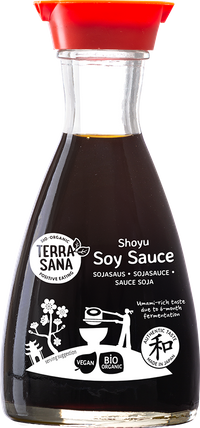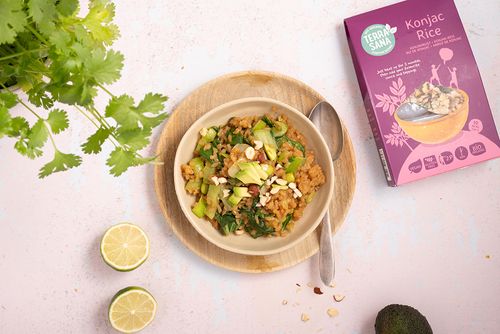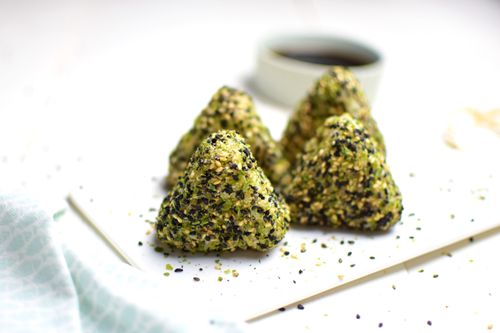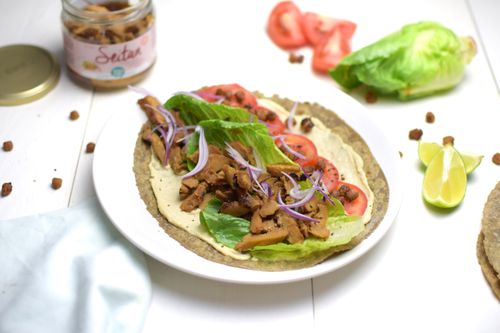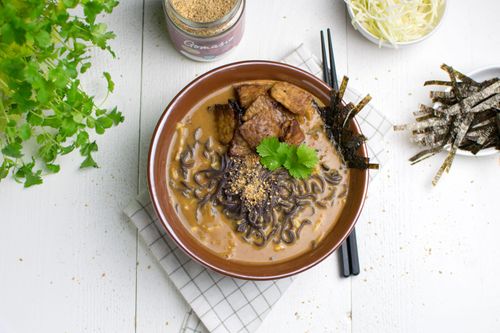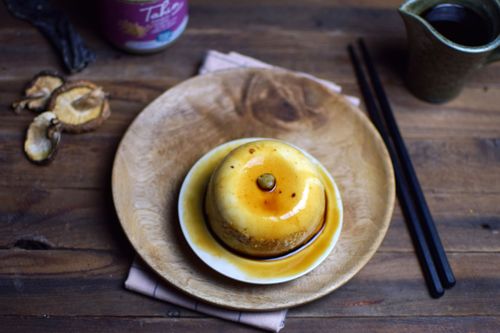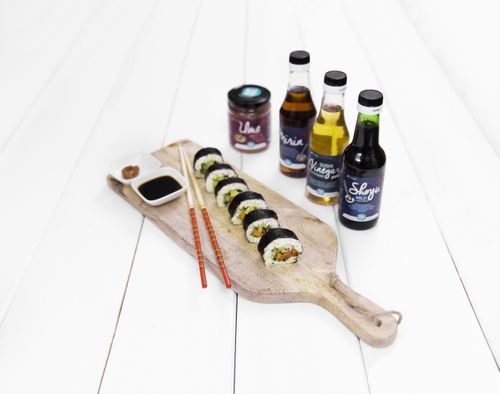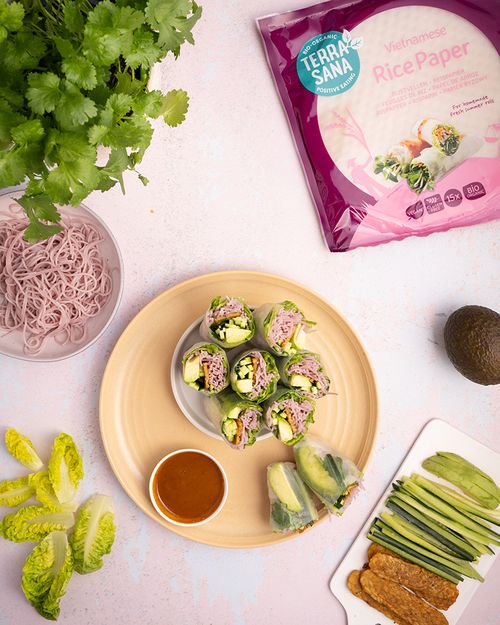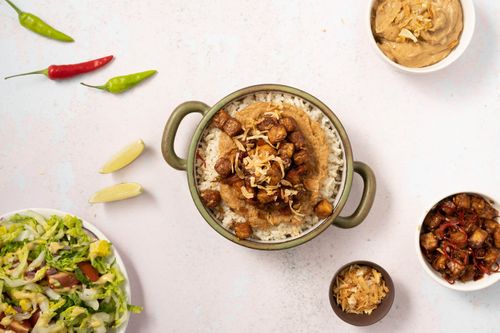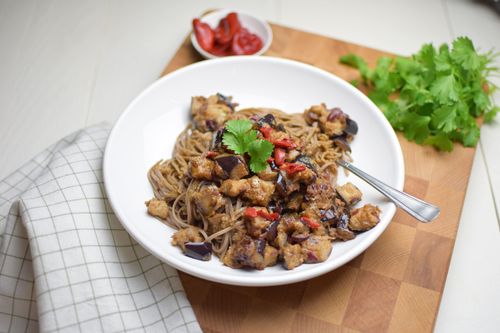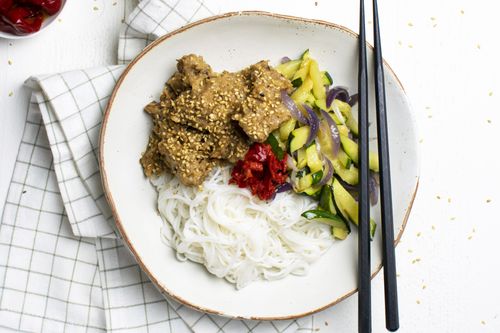10 ways to use soy sauce (shoyu and tamari)
10 ways to use Japanese soy sauce
Scroll down for delicious recipes with Japanese soy sauce.
- Marinades: Perfect for tofu, tempeh, fish or meat. Combine with garlic, ginger and a little sesame oil.
- Dip for sushi: Mix with a little wasabi for the perfect flavour balance.
- Stir-fries: Add a dash for umami in your wok with vegetables, noodles or rice.
- Soups: Give your miso or ramen soup extra depth with a few drops.
- Seasoning in dressings: Mix with vinegar and oil for an Asian touch to your salads.
- Glaze: Use soy sauce as a base for a glaze on baked or grilled dishes.
- Seasoning for rice: A few drops over your steamed rice will immediately add flavour.
- Fermented dips: Combine with tahini or peanut butter for a unique sauce.
- Grilled vegetables: Drizzle vegetables such as eggplant, zucchini or bell pepper with soy sauce for a rich, salty flavour after grilling.
- Popcorn or snacks: Mix a little soy sauce with oil and drizzle over popcorn or nuts for a salty twist.
- Gyoza dip: Mix soy sauce with rice vinegar and a pinch of chili oil for a classic dip with dumplings.
- Oven dishes: Use soy sauce as a marinade or sauce for roasted vegetables, potatoes or tofu in the oven.
- Poke bowls: Add soy sauce as a dressing for rice and toppings such as avocado, salmon or seaweed.
- Noodle salads: Mix with sesame oil and garlic for a simple, flavourful dressing.
- Stampot: Give your stamppot (a Dutch mashed potato and vegetable dish) an Asian twist by adding soy sauce to the mashed potatoes and vegetables.
Shoyu and tamari are both Japanese soy sauces. They are similar, but differ slightly in flavour, ingredients and use.
What is shoyu?
Shoyu is the classic Japanese soy sauce, made from soy beans and wheat. The fermentation process gives shoyu a mild, balanced umami flavour with a hint of sweetness. Great for sushi, stir-fries and marinades. Shoyu is the most commonly used soy sauce.

What is tamari?
Tamari is a wheat-free soy sauce, which means it is often gluten-free. It has a deeper, fuller flavour and is less salty than shoyu. Ideal for dips, soups and as a flavour enhancer in sauces.
The main differences
- Shoyu: with wheat, mild and slightly sweeter
- Tamari: wheat-free, fuller and less salty
- Use: shoyu for versatility, tamari for deep umami and gluten-free cooking

What is the difference between Japanese and Chinese soy sauce?
Japanese soy sauces (such as shoyu and tamari) are traditionally brewed using only natural ingredients. They are balanced, less salty and subtly sweet due to the fermentation of wheat. This gives them a pure, complex umami flavour that is well-balanced.
Chinese soy sauces are often produced more quickly and often contain added sugar or molasses. This makes them sweeter and sometimes thicker. If you think it is important to have a pure and authentic product, Japanese soy sauce is usually a better choice.
The ultimate soy sauce sauce
Our favourite soy sauce recipe is one we are not going to keep from you. You will want to have it in your standard repertoire of recipes. It has all the flavours, is easy to remember and goes especially well with noodles. Here it is (serves 1):
- 1 heaped tablespoon peanut butter or white tahini
- 2 tablespoons shoyu or tamari
- 1 tablespoon sesame oil (the TerraSana variety is super aromatic, indispensable!)
- Garlic powder to taste
- Chilli flakes to taste
- Black pepper to taste
- Possibly a teaspoon of lemon juice or genmai su
You really want to screenshot this. This is a base that you can enjoy in many ways. If you add miso, it also makes a good base for your ramen or soup.
How to use soy sauce in soup
A dash of soy sauce immediately gives your soup a deep umami flavour. Add it:
- To stocks: for extra heartiness, especially in miso or vegetable soup
- At the end: this way you preserve the full flavour
- Instead of salt: natural umami without artificial additives
Shoyu for a mild touch, tamari for a fuller flavour. Which will you choose?
How to use soy sauce in a dressing
Soy sauce gives your dressing a savoury umami kick. Mix it with:
- Olive oil or sesame oil – for a creamy base
- Lemon juice or vinegar – for freshness
- Ginger, garlic or mustard – for extra spice
Shoyu provides a mild balance, tamari gives a deeper flavour. Which one suits your salad?
How to use soy sauce in dips
Soy sauce is the seasoning that makes your dip. Mix it with:
- Sesame oil + ginger + garlic → savoury and aromatic
- Lime juice + chilli → fresh and spicy
- Peanut butter + coconut milk → for a tasty peanut sauce
Shoyu for mild and balanced, tamari for a deeper umami flavour. Which will you choose?



